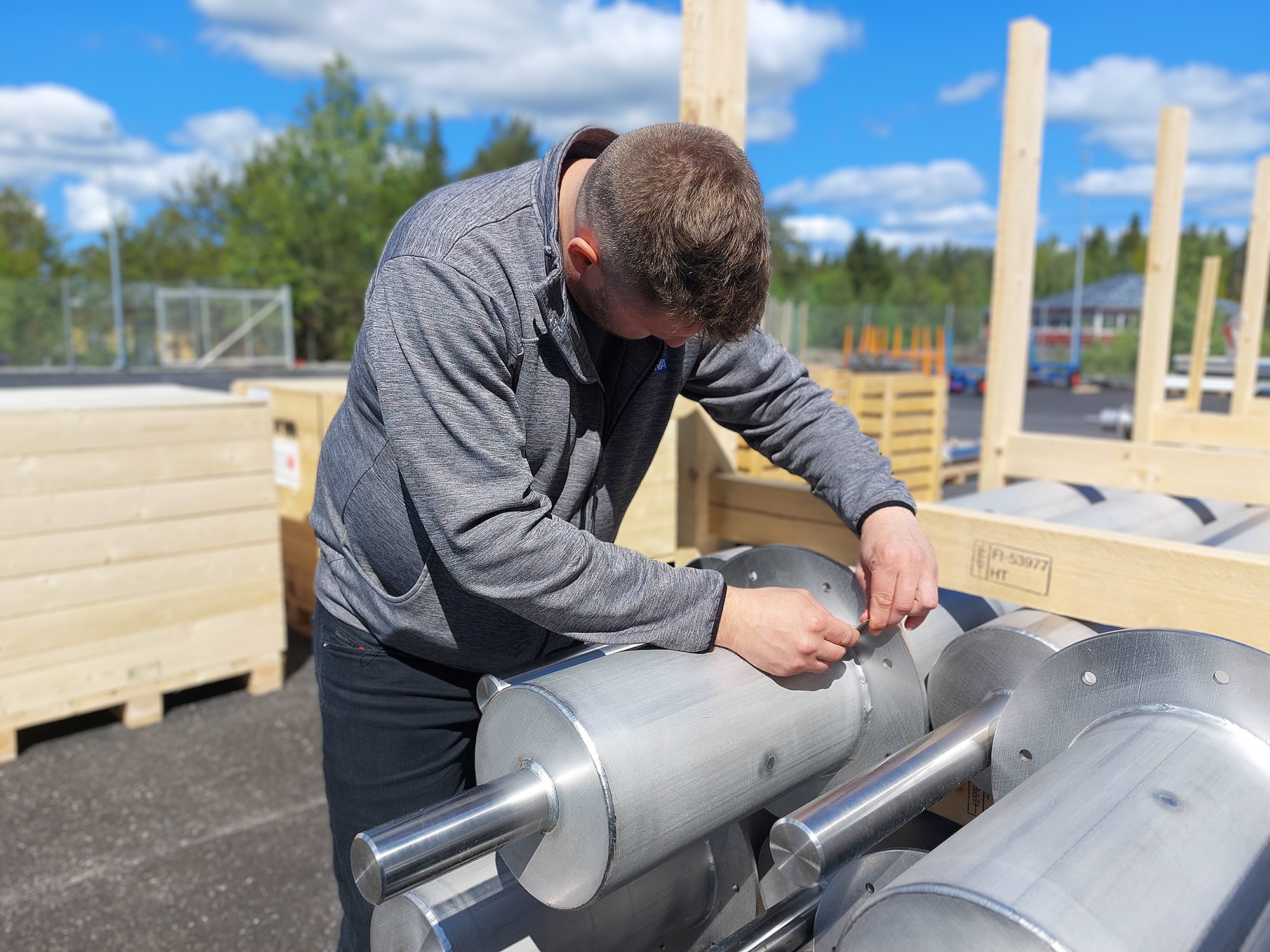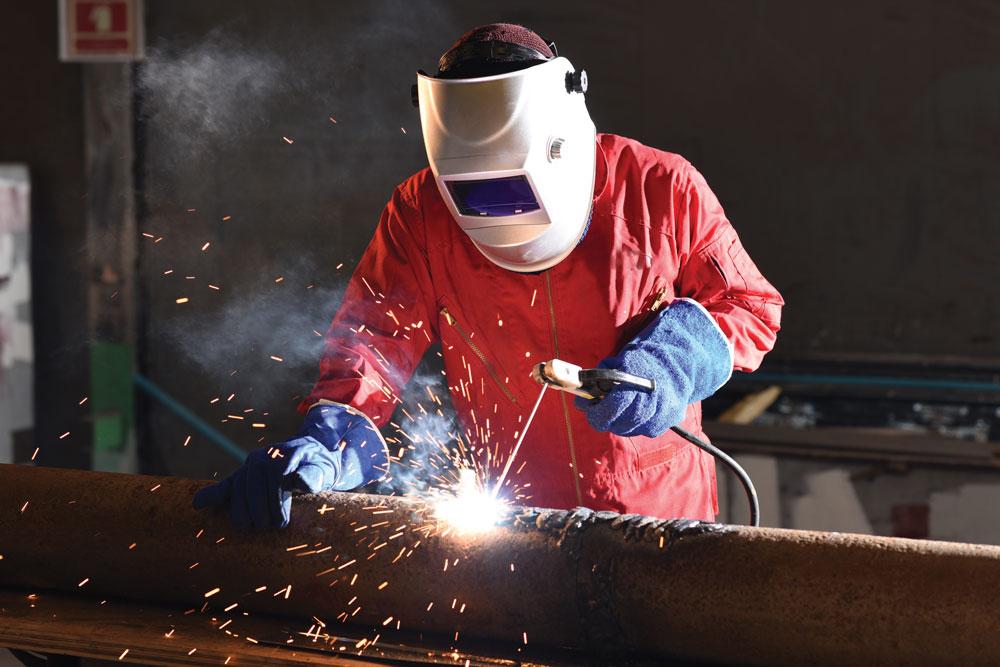Leading Benefits of Choosing Welding Inspection Racine for Quality Assurance
Leading Benefits of Choosing Welding Inspection Racine for Quality Assurance
Blog Article
Cutting-edge Strategies to Fillet Weld Examination and Screening: Enhancing Weld Quality and Conformity Standards
In the realm of welding, the top quality and stability of fillet welds play an important role in ensuring the architectural soundness and reliability of different industrial parts. With the continuous drive for improved effectiveness and compliance with rigid standards, the expedition of innovative methods to fillet weld inspection and screening has come to be crucial.
Advanced Non-Destructive Testing Techniques
Utilizing advanced technologies, progressed non-destructive testing approaches play an essential duty in guaranteeing the honesty and quality of fillet welds. These techniques, such as phased array ultrasonic testing (PAUT) and magnetic fragment screening (MPT), offer comprehensive understandings into the weld's interior framework without triggering any kind of damages to the material. PAUT, for example, uses multiple ultrasonic aspects to evaluate the weld from various angles, giving an extensive visualization of possible defects like lack of combination or fractures.
Likewise, MPT is reliable in spotting surface-breaking flaws by using an electromagnetic field and iron particles to the weld area. This technique is especially valuable for identifying suspensions that may compromise the weld's stamina. By employing these innovative non-destructive screening strategies, weld inspectors can accurately analyze the high quality of fillet welds, guaranteeing conformity with sector criteria and laws. The capacity to spot defects early on not only boosts weld high quality yet additionally protects against pricey rework or failings in structural stability, underscoring the relevance of these ingenious testing methods in welding evaluations.
Robotics and Automation in Assessment
The integration of robotics and automation has reinvented the examination procedure for fillet welds, boosting efficiency and accuracy in top quality assessment. Robotics provide precise control and repeatability in examining welds, making certain constant and trusted results. Automated systems can be programmed to adhere to certain assessment courses, ensuring comprehensive insurance coverage of welds and decreasing the threat of human error.
Robotic inspection systems equipped with advanced sensors can detect and gauge weld functions with high accuracy, providing detailed data for evaluation. These systems can recognize issues such as fractures, absence of blend, and porosity, enabling timely restorative actions to be taken. Additionally, robotics and automation permit for real-time information collection and evaluation, providing instant comments to drivers and helping with quick decision-making processes.
Moreover, using robotics and automation in fillet weld examination enhances total efficiency by minimizing examination times and enhancing examination throughput. By enhancing the inspection process, producers can make sure weld top quality and compliance requirements are fulfilled efficiently, ultimately leading to cost savings and boosted product quality.
Using Artificial Knowledge for Evaluation
Man-made intelligence plays a critical function in improving the effectiveness and accuracy of analysis in fillet weld inspection processes. By using the power of AI, examiners can improve the analysis of weld top quality and conformity requirements, bring about a lot more precise and dependable results. AI algorithms can swiftly process substantial quantities of information from weld inspections, spotting issues or incongruities that may be testing to identify with the naked eye. This innovative technology allows real-time monitoring of weld quality, enabling immediate corrective activities to be taken if any problems are found.
In addition, AI systems can discover from previous examination information, constantly boosting their capability to identify possible issues and deviations in fillet welds. This adaptive discovering capability boosts the overall top quality control procedure, decreasing the probability of human error and ensuring that welds meet the needed requirements. By integrating expert system right into fillet weld evaluation, markets can achieve higher degrees of performance, consistency, and compliance in their assessment techniques.
Portable Equipment for On-Site Examination
 Enhancing field evaluation efficiency, the fostering of mobile tools revolutionizes on-site analysis processes for fillet welds. These tools offer versatility and ease, enabling assessors to carry out comprehensive evaluations in various locations, including remote or challenging atmospheres. Mobile devices such as ultrasonic screening tools, magnetic fragment inspection equipment, and electronic radiography systems offer real-time information next and high-resolution imaging capacities, enabling quick decision-making and immediate comments on weld high quality.
Enhancing field evaluation efficiency, the fostering of mobile tools revolutionizes on-site analysis processes for fillet welds. These tools offer versatility and ease, enabling assessors to carry out comprehensive evaluations in various locations, including remote or challenging atmospheres. Mobile devices such as ultrasonic screening tools, magnetic fragment inspection equipment, and electronic radiography systems offer real-time information next and high-resolution imaging capacities, enabling quick decision-making and immediate comments on weld high quality.One substantial benefit of portable tools is their ability to simplify evaluation treatments, minimizing downtime and enhancing overall performance. Examiners can conveniently move these tools to different work sites, eliminating the need for delivering heavy equipment or parts to off-site centers. In addition, the transportability of these tools promotes cost-effectiveness by lessening transport costs and accelerating assessment timelines.
In addition, using portable tools for on-site inspection promotes proactive quality assurance steps, as assessors can promptly recognize and resolve any kind of prospective welding issues or disparities. By integrating these ingenious modern technologies right into on-site assessment techniques, welding sites specialists can make certain conformity with market standards and boost weld quality, ultimately causing enhanced architectural honesty and security in various welding applications.
Integration of Information Administration Equipment
Having enhanced on-site inspection processes through the usage of portable tools, the following phase includes the smooth integration of information administration systems to better boost performance and information evaluation abilities in fillet weld evaluation and screening. Welding Inspection Racine. By integrating information monitoring systems right into the examination process, organizations can improve data collection, storage, and analysis. This combination allows for real-time monitoring of weld quality, prompt identification of defects, and timely decision-making to remedy any kind of issues that may emerge during the assessment process
Data management systems play a vital function in streamlining assessment data, facilitating simple access for licensed employees, and guaranteeing information integrity and security. Through the assimilation of these systems, inspectors can produce thorough records, track historical data for fad evaluation, and improve general procedure effectiveness. Moreover, the integration of data administration systems enables seamless interaction in between various stakeholders entailed in the inspection process, fostering collaboration and enhancing total quality assurance measures. Ultimately, the combination of data monitoring systems serves to boost the criteria of fillet weld assessment and screening, making sure conformity with sector laws and enhancing weld high quality.
Verdict
To conclude, cutting-edge methods to fillet weld examination and screening have significantly boosted weld high quality and compliance standards. Advanced non-destructive screening methods, robotics, automation, artificial knowledge, mobile tools, and information administration systems have changed the means weld assessments are conducted. By utilizing these innovations, markets can guarantee that welds webpage satisfy the needed top quality criteria and laws, inevitably boosting general efficiency and safety and security in welding procedures.

By utilizing these advanced non-destructive screening techniques, weld examiners can properly assess the top quality of fillet welds, guaranteeing compliance with market requirements and regulations. Mobile devices such as ultrasonic testing devices, magnetic fragment examination devices, and electronic radiography systems supply real-time data and high-resolution imaging abilities, enabling fast decision-making and instant comments on weld high quality.
Having optimized on-site evaluation procedures via the application of mobile tools, the next stage involves the seamless integration of data monitoring systems to even more boost performance and information analysis abilities in fillet weld assessment and testing (Welding Inspection Racine). Ultimately, the integration of data management systems offers to elevate the requirements of fillet weld inspection and screening, making certain compliance with industry laws and boosting weld top quality
 In verdict, innovative strategies to fillet weld assessment and screening have actually dramatically enhanced weld top quality and conformity standards.
In verdict, innovative strategies to fillet weld assessment and screening have actually dramatically enhanced weld top quality and conformity standards.Report this page